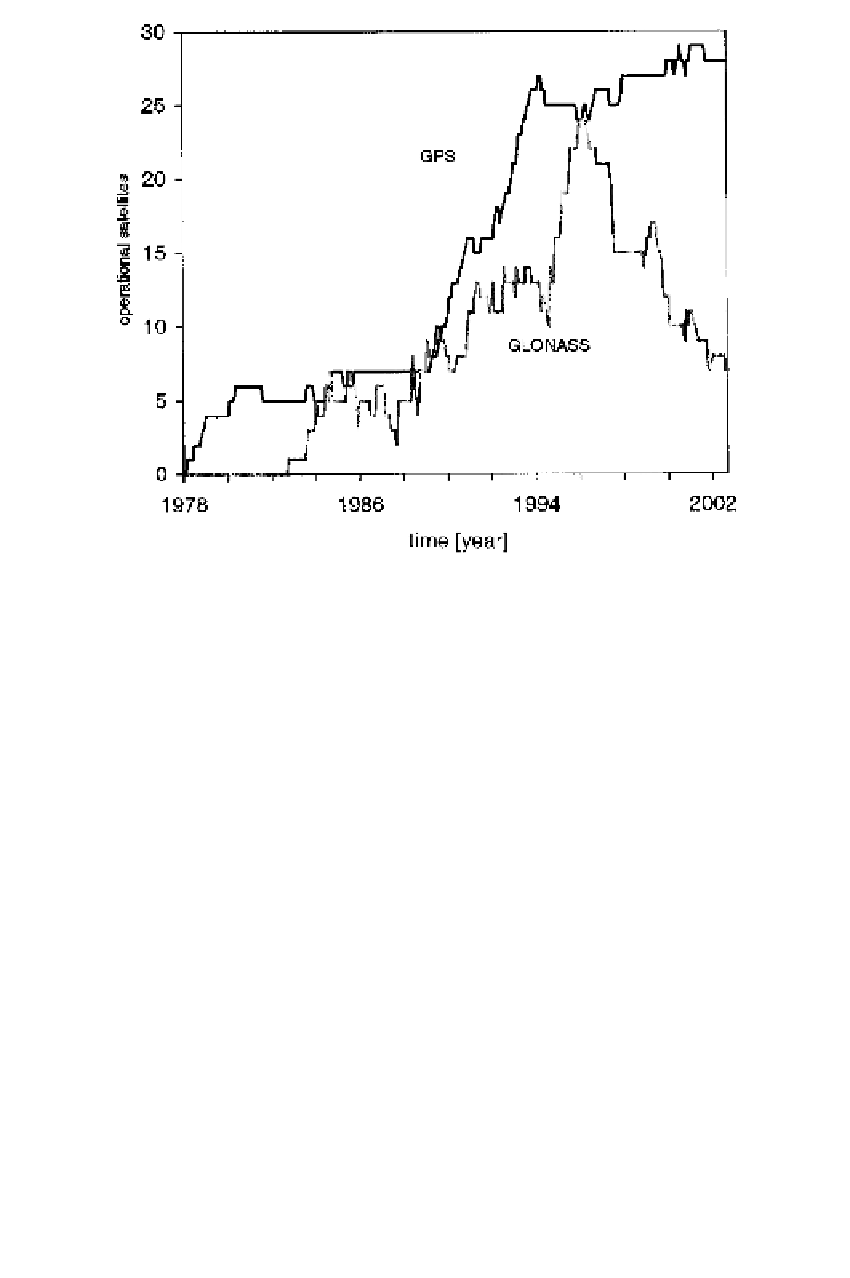Global Positioning System Reference
In-Depth Information
1
2
3
4
5
6
7
8
9
10
11
12
13
14
15
16
17
18
19
20
21
22
23
24
25
26
27
28
29
30
31
32
33
34
35
36
37
38
39
40
41
42
43
44
45
[87
Lin
—
4.9
——
No
PgE
Fi
gure 3.12
Operational GPS and GLONASS satellites.
(Data from various Internet
documents.)
[87
A major difference between GLONASS and GPS is that each GLONASS satellite
transmits at its own carrier frequency. Let
p
denote the channel number that is specific
to the satellite, then
f
1
=
1602
+
0
.
5625
p
MHz
(3.91)
f
2
=
1246
+
0
.
4375
p
MHz
(3.92)
with
f
p
1
9
7
f
2
=
(3.93)
The original GLONASS signal structure used 1
24, covering a frequency
range in L1 from 1602.5625 MHz to 1615.5 MHz. However, receivers have an inter-
ference problem in the presence of mobile-satellite terminals that operate at the 1610
to 1621 MHz range. To avoid such interference, it has been suggested that channel
numbers will be limited to
≤
p
≤
13 and satellites located in antipodal slots of
the same orbital plane may transmit at the same frequency (GLONASS, 1998).
The L1 and L2 frequencies are coherently derived from common onboard fre-
−
7
≤
p
≤












































